1 Introduction to DeepSeek
Large language models now write, code, and reason at near-human levels—but this chapter invites you to go a step further: build one yourself to truly understand how it works. It frames DeepSeek as a pivotal moment for open-source AI, showing that freely available models can rival proprietary systems in capability and efficiency. Grounded in a spirit of democratization, the book sets the goal of reconstructing DeepSeek’s core ideas from first principles so you gain both intuition and hands-on skill, not just surface-level familiarity.
At a high level, the roadmap centers on four pillars that distinguish DeepSeek from a standard Transformer: Multi-Head Latent Attention to ease attention’s speed and memory bottlenecks, a Mixture-of-Experts layer to expand capacity efficiently, Multi-Token Prediction to accelerate learning and inference, and FP8 quantization to push computational efficiency. These are complemented by an optimized training pipeline that overlaps workloads for high device utilization, and a multi-step post-training process that blends supervised fine-tuning, pure reinforcement learning, rejection sampling and self-labeling, and a final RL phase to cultivate strong reasoning. The chapter also highlights knowledge distillation, compressing a massive teacher into compact student models (spanning roughly 1.5B to 70B parameters) that retain much of the performance while remaining practical.
The book is organized into four progressive stages: foundations for efficient inference (including the KV cache), core architectural innovations (implementing MLA and MoE), advanced training techniques (MTP, FP8, and pipeline scheduling), and post-training methods (SFT, RL, and distillation) that culminate in a cohesive mini-DeepSeek. The scope prioritizes clarity and reproducibility over reproducing proprietary data, exact weights, or massive distributed infrastructure, and it omits production deployment concerns. To follow along, readers need Python proficiency, basic deep learning and PyTorch familiarity, and a working grasp of Transformers; experiments are designed to run on modest hardware—from CPU-only laptops (slower) to single GPUs with 8–12GB VRAM, with larger GPUs simply enabling more ambitious MoE exercises.
A simple interaction with the DeepSeek chat interface.
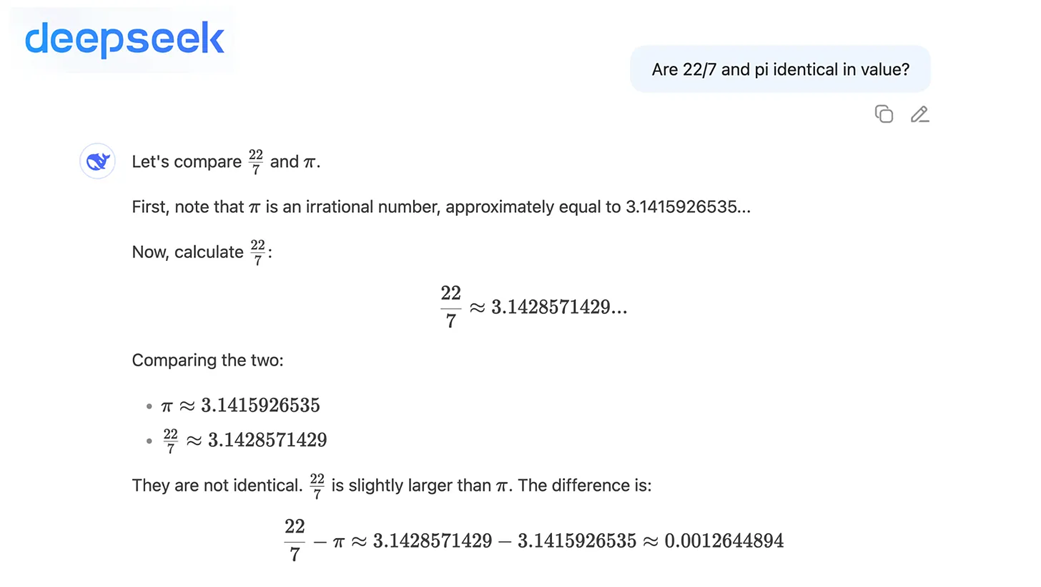
The title and abstract of the DeepSeek-R1 research paper.

A detailed view of a standard Transformer block, the foundational architecture used in models like LLaMA and the GPT series. It is composed of a multi-head attention block and a feed-forward network (NN).

A simplified view of the DeepSeek model architecture. It modifies the standard Transformer by replacing the core components with Multi-Head Latent Attention (MLA) and a Mixture-of-Experts (MoE) layer. This design also utilizes RMS Norm (Root Mean Square Normalization) and a specialized Decoupled RoPE (Rotary Position Embedding).
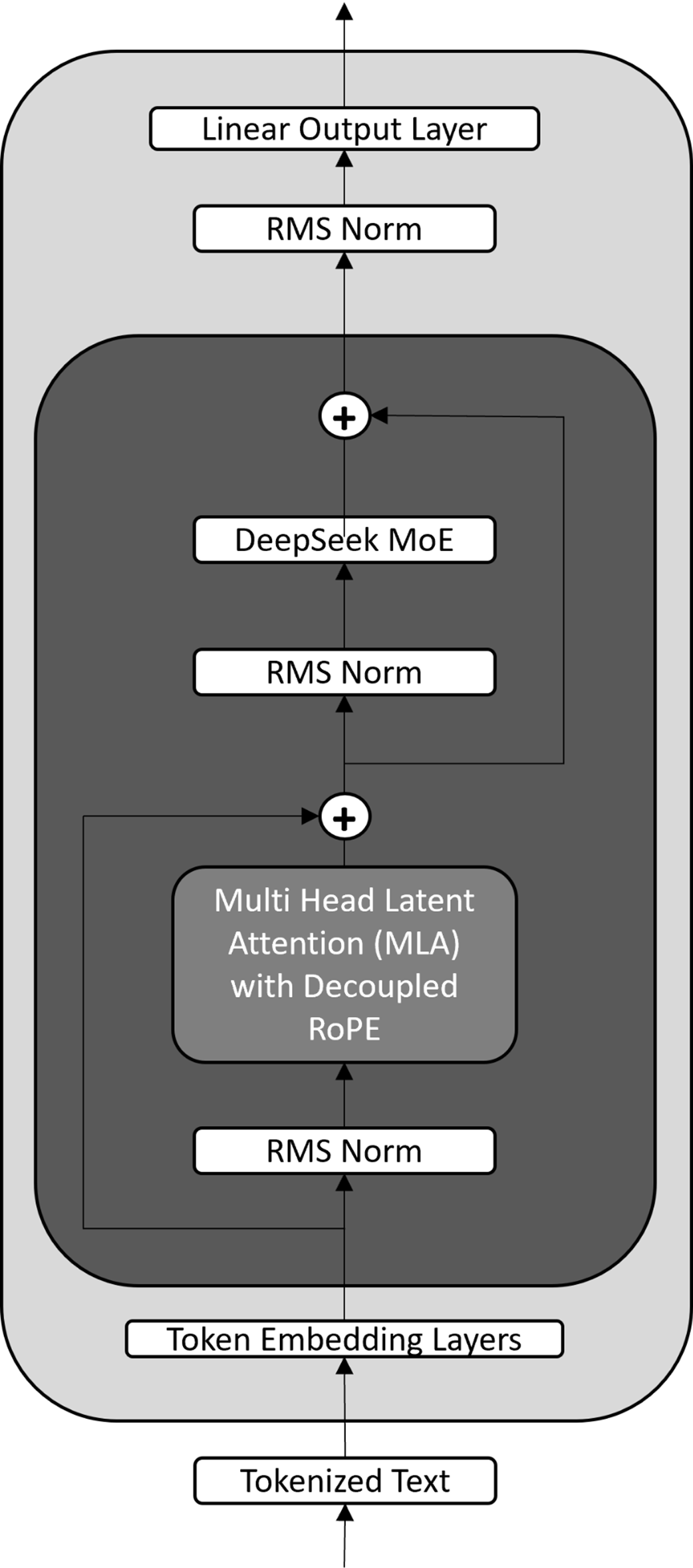
An illustration of the DualPipe training pipeline on a single device. By overlapping the forward pass (the initial blocks), backward pass (the hatched blocks), and combined computations, this scheduling strategy minimizes GPU idle time and maximizes hardware utilization during large-scale training.

The multi-step post-training pipeline used to create DeepSeek-R1 from the DeepSeek-V3 base model. This process involves a combination of reinforcement learning (Pure RL), data generation (Rejection sampling), and fine-tuning to instill advanced reasoning capabilities.

Benchmark performance of DeepSeek-R1 against other leading models (as of January 2025).
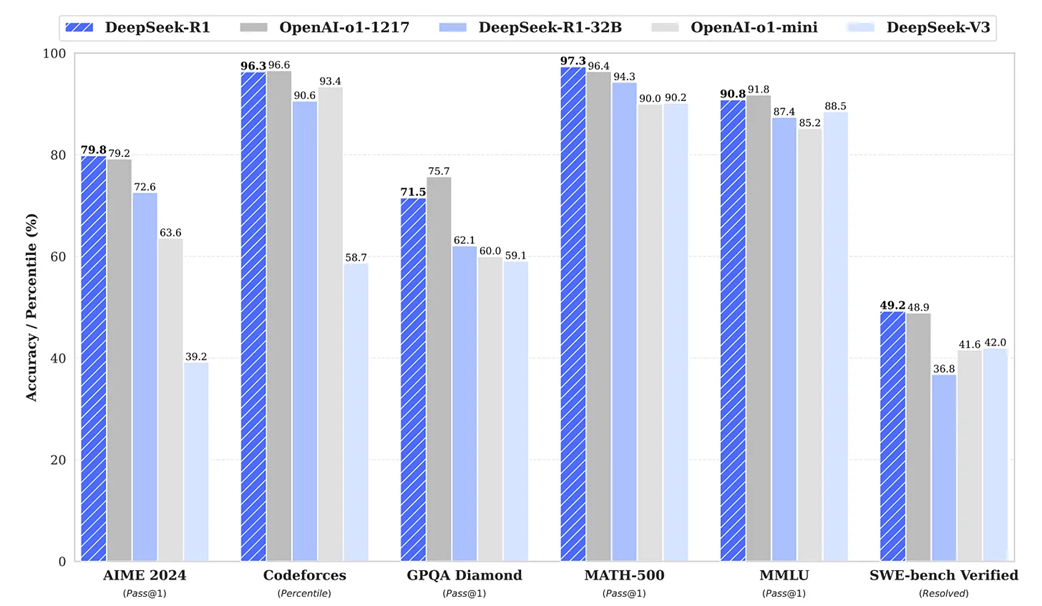
The concept of knowledge distillation. A large, powerful "teacher" model (like DeepSeek-R1) is used to generate training data to teach a much smaller, more efficient "student" model, transferring its capabilities without the high computational cost.
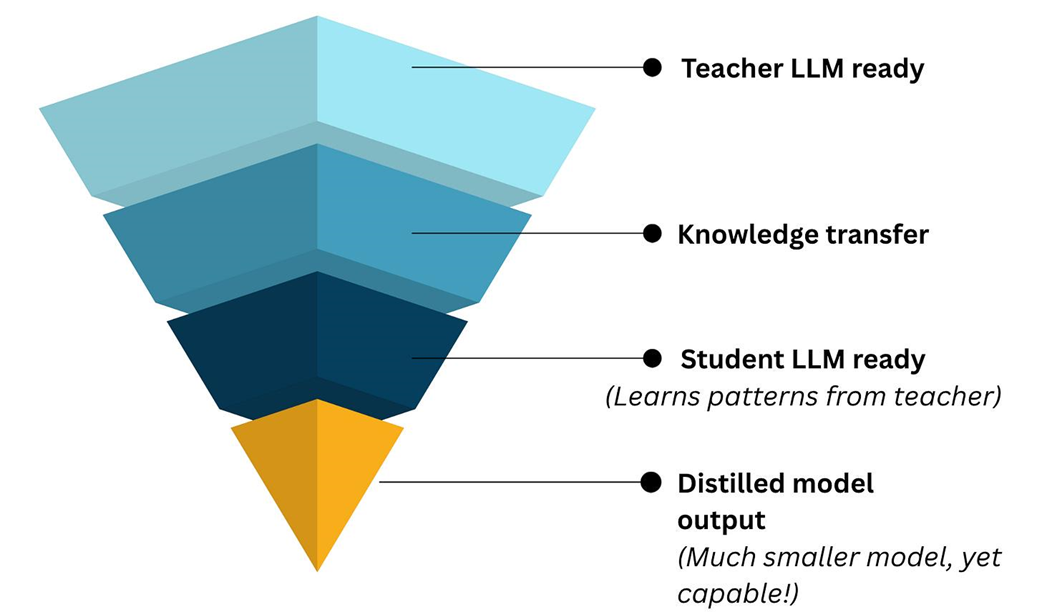
The four-stage roadmap for building a mini-DeepSeek model in this book. We will progress from foundational concepts (Stage 1) and core architecture (Stage 2) to advanced training (Stage 3) and post-training techniques (Stage 4), implementing each key innovation along the way.

Summary
- Large Language Models (LLMs) have become a dominant force in technology, but the knowledge to build them has often been confined to a few large labs.
- DeepSeek marked a pivotal moment by releasing open-source models with performance that rivaled the best proprietary systems, demonstrating that cutting-edge AI could be developed and shared openly.
- This book will guide you through a hands-on process of building a mini-DeepSeek model, focusing on its key technical innovations to provide a deep, practical understanding of modern LLM architecture and training.
- The core innovations we will implement are divided into four stages: (1) KV Cache Foundation, (2) Core Architecture (MLA & MoE), (3) Advanced Training Techniques (MTP & FP8), and (4) Post-training (RL & Distillation).
- By building these components yourself, you will gain not just theoretical knowledge but also the practical skills to implement and adapt state-of-the-art AI techniques.
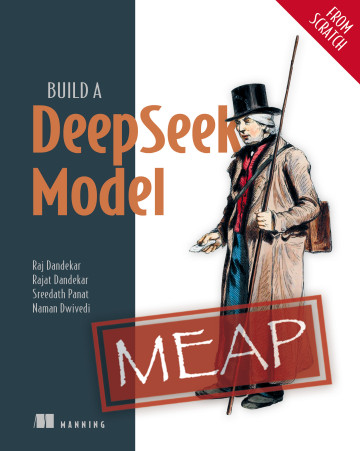 Build a DeepSeek Model (From Scratch) ebook for free
Build a DeepSeek Model (From Scratch) ebook for free